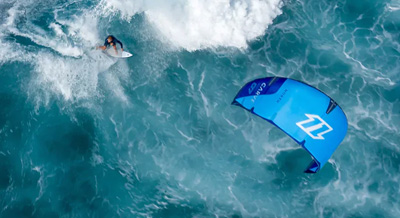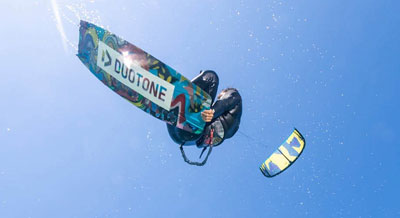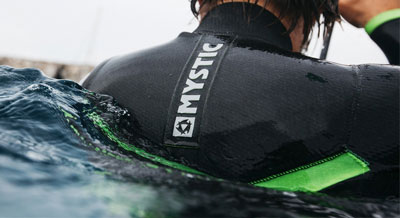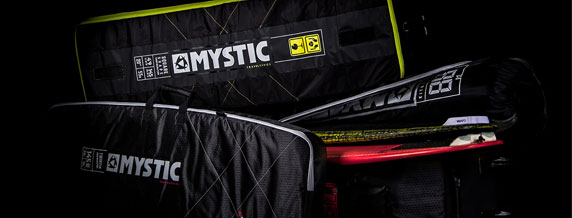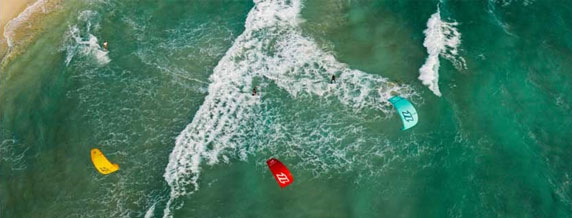- Home
- Blogs
09.10.2024
Kitemana to Blind: Kiteboard Test - Test results
In this blog, we’re following up on our Kitemana to Blind: Twintip test series by diving deeper into the results from our group of testers. We’ll show you the overall and characteristic-specific results for each board, so you can get a clear picture of how each one performed. And get a better understanding of the results of our test which are surprisingly interesting.
The test group had about 10 minutes per board, and once they’d tried them all, they had the chance to re-try any board they wanted to spend more time with for better review. We asked each rider to rate the boards on a scale of 1-5 in four main characteristics: Grip, Upwind, Speed, and Pop. At the end, they also provided an overall rating and shared their personal favorites, which you’ll find at the end of this blog.

Overall Test Group Results
Before diving into the group’s test results, let’s recap Ruben Lenten’s personal preferences after testing the boards in various conditions:
In Episode 2 with strong winds and Big Air riding, Ruben’s top pick was the Naish Motion, followed by the Duotone Jaime and the Reedin KevPro.
In Episode 3, which focused on low winds and freeriding, Ruben leaned towards the Duotone Jaime as his favorite, with the Core Fusion and the Reedin KevPro rounding out his top three.
For his final overall choice, Ruben crowned the Duotone Jaime as his top performer, with the Reedin KevPro and Core Fusion taking second and third, respectively.
We’ll kick off with the overall ratings from all 8 testers. By combining all their scores, we’ve determined which boards performed best across all characteristics. Some testers gave boards a score of for example a 4.9, that is why you will see scores with decimals behind the comma.
With clear distance and also matching the preference of Ruben, we have an overall winner with Duotone Jaime. Surprisingly only have 1 rider from our test group choosing the Jaime as his personal favourite, we see that the overall score given to the Jaime a 4.08 out of 5.
In second place is the Lieuwe Shotgun, earning a solid 3.78, while the Reedin KevPro comes in a close third with a 3.73.
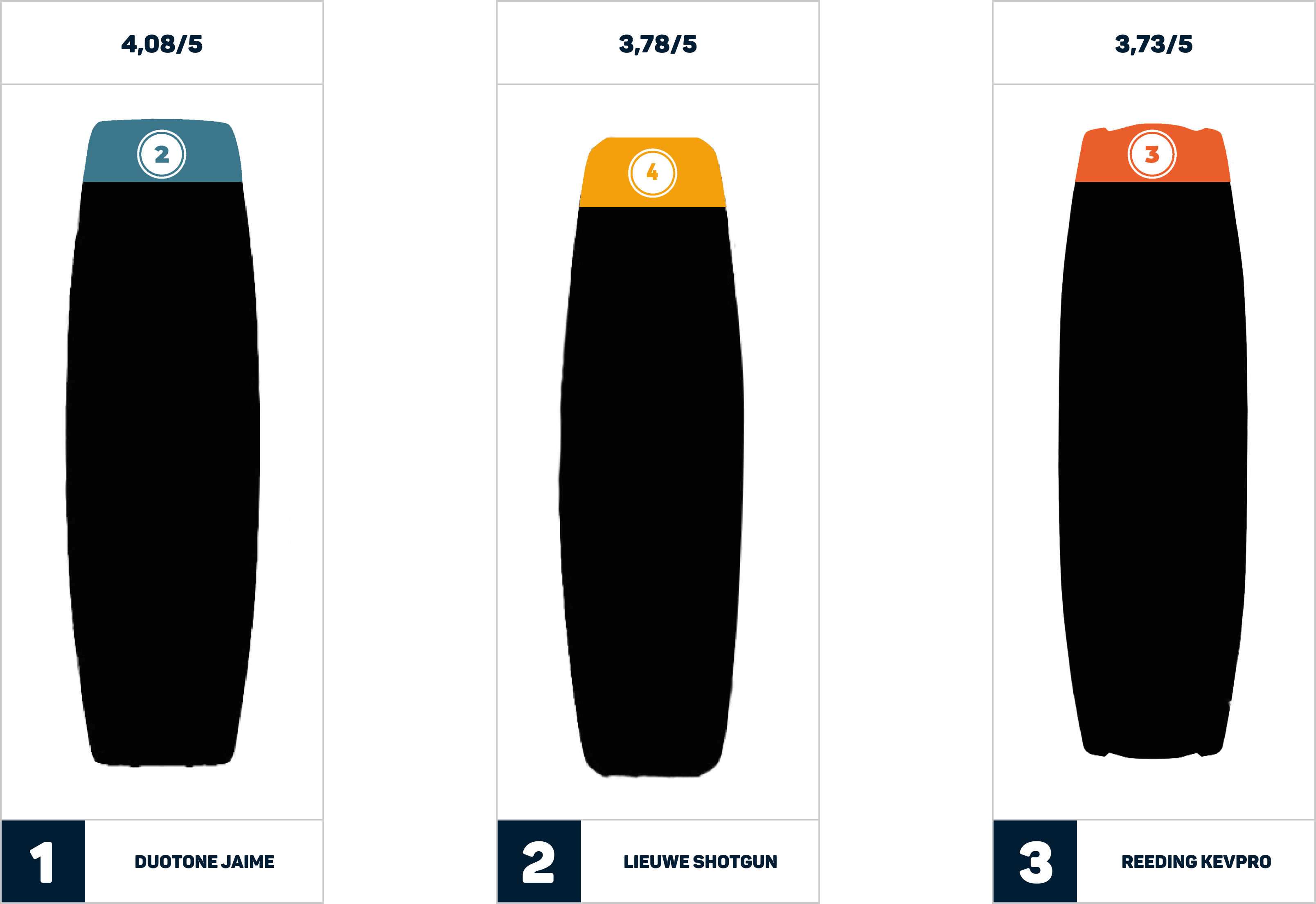
Kiteboard Grip
In kiteboarding, the grip of a kiteboard refers to how well the board holds or locks onto the water when you’re riding. It influences how much control you have over the board, especially when edging or carving. A board with good grip provides more stability and allows you to maintain control while pushing hard against the water, which is particularly useful when going upwind, making sharp turns, or performing powerful tricks.
Several factors affect the grip of a kiteboard:
- Fins: Larger or more aggressive fins increase grip by providing more surface area to bite into the water.
- Rocker: Boards with less rocker (flatter boards) tend to have more grip because a larger portion of the board remains in contact with the water.
- Outline: Boards with a squarer or wider outline tend to have better grip, while more rounded boards offer looser, more playful riding.
- Channels: Deep channels on the bottom of the board also improve grip by directing the water flow and increasing stability.
More grip generally means more control and a smoother ride in challenging conditions, but it can make the board feel less playful for freestyle tricks where you want the board to slide or rotate more easily. Let’s take a look at how the test group rated the boards in terms of grip. Below are the top-performing freeride boards, as ranked by our testers.
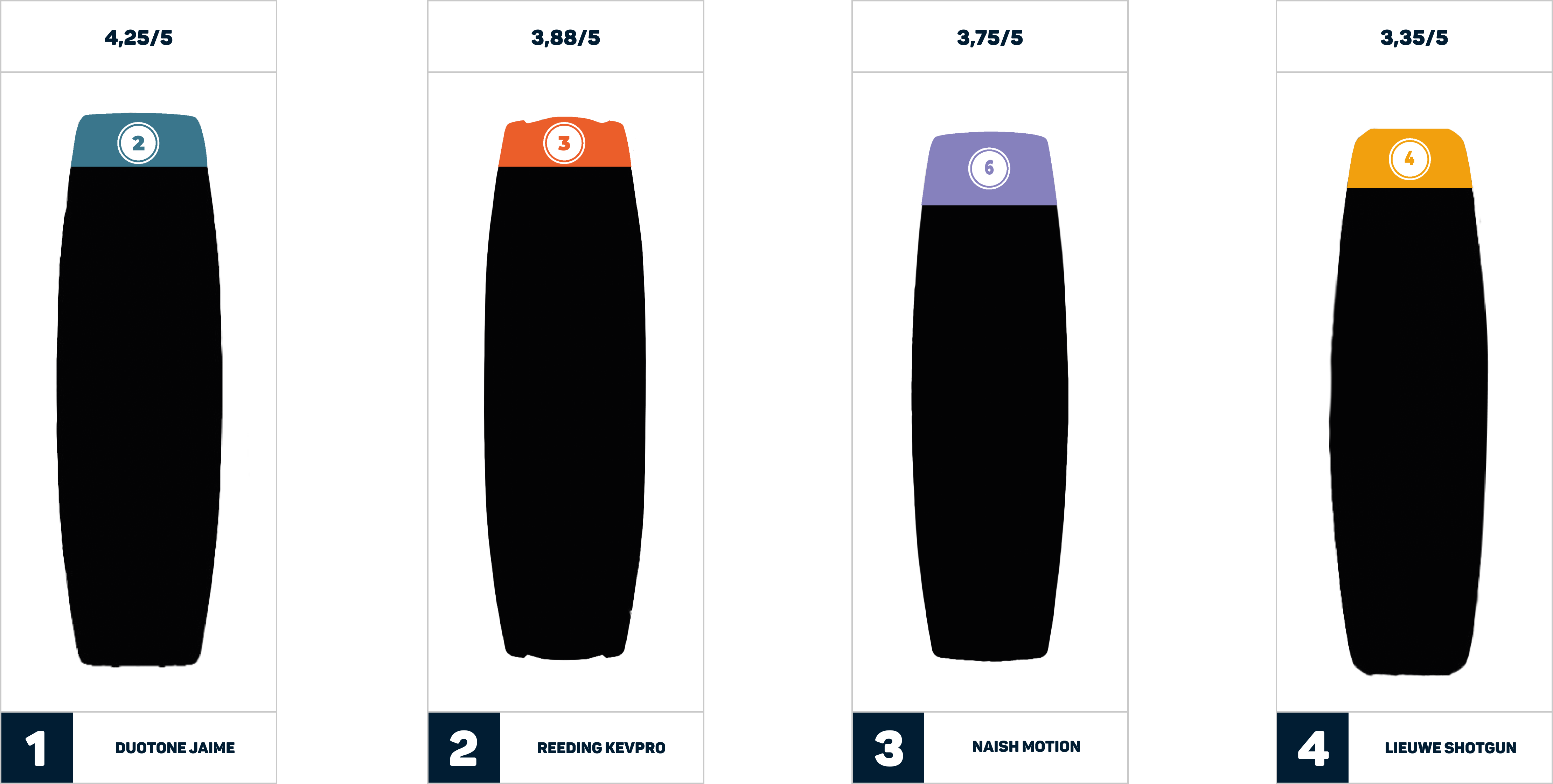
Upwind Performance
In kiteboarding, upwind refers to the ability of the kiteboard and rider to travel or maintain position against the wind direction, rather than being pushed downwind. A kiteboard’s upwind performance is crucial because it determines how easily you can ride back toward your starting point after being pushed downwind by the wind or after performing jumps or tricks.
Several factors influence a kiteboard's ability to go upwind:
- Board Size and Shape: Larger boards with a flatter rocker (less curvature) tend to ride more efficiently upwind because they provide more surface area, allowing better edge control and stability. Boards with a more rectangular outline typically perform better upwind than those with a rounded or narrow shape.
- Fin Setup: Larger or more aggressive fins help by providing extra grip in the water, allowing the rider to control the board’s direction better, especially when riding upwind.
A board that performs well upwind allows you to cover more ground efficiently, avoid drifting downwind, and makes it easier to return to your launch point or reach specific spots on the water.
Although the Lieuwe Shotgun has a rounder outline, it shares the top position with the Duotone Jaime for upwind performance. Below you can see which freeride performance boards came out on top, rated by the test group.
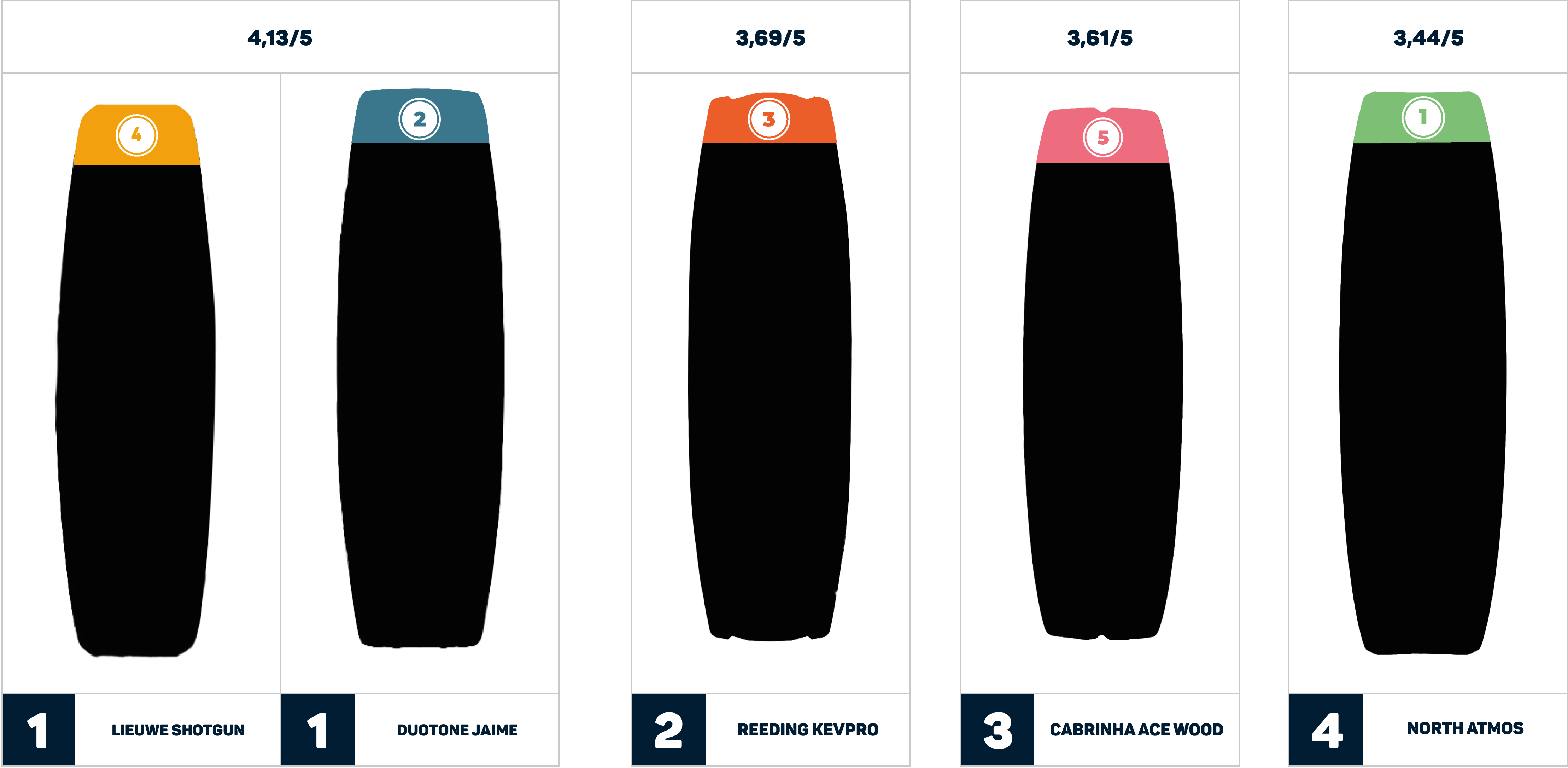
Speed
The speed ability of a kiteboard refers to how efficiently and quickly it can glide over the water. Several key factors contribute to a kiteboard’s speed potential, influencing how fast it can go under various wind and water conditions. Here's what to consider:
- Rocker: The amount of curvature or "rocker" in a kiteboard has a big impact on speed. Boards with less rocker (flatter boards) tend to glide more smoothly and quickly over the water because they have more surface area in contact with the water, offering less resistance. In contrast, boards with a high rocker provide better control in choppy conditions but are generally slower because they create more drag.
- Outline and Length: Longer boards or boards with a more parallel outline (squarer shape) are typically faster because they create less drag and have better efficiency in cutting through the water. Narrower boards also tend to ride faster, as they offer less water resistance.
- Board Flex: Stiffer boards generally offer better speed because they don’t absorb as much energy from the water. More flexible boards provide a smoother ride but can absorb energy that would otherwise translate into speed.
- Channels and Fins: Deep channels on the bottom of the board help streamline water flow, reducing drag and enhancing speed. Similarly, smaller, more hydrodynamic fins minimize resistance, allowing the board to reach higher speeds more easily.
In summary, the speed ability of a kiteboard is determined by its design characteristics like rocker, outline, flex, and hydrodynamics, combined with the rider's skill. A board designed for speed is typically flatter, stiffer, and has a more streamlined shape for riding through the water efficiently.
Let’s wrap up the test results of your group regarding to the speed characteristics of the boards. Below you can see which Freeride performance boards came out on top, rated by our test group. Here’s how the test group ranked the boards at the speed the got. Take a look to see which freeride boards topped the list in this category.

Kiteboad Pop
The pop ability of a kiteboard refers to how well it allows the rider to "pop" off the water, generating lift and height for jumps or tricks without the help of the kite pulling upward. A board with good pop allows the rider to load up tension against the water, release it, and explode into the air with greater control and amplitude.
Several factors influence a kiteboard’s pop ability:
- Flex: Boards with a medium-to-stiff flex are generally better for pop. A stiffer board provides a more direct transfer of energy when you edge hard against the water, giving a quick and responsive release. If the board is too soft, it absorbs some of the energy, reducing the amount of pop.
- Rocker: A moderate-to-low rocker (flatter board) helps generate pop because more of the board stays in contact with the water, allowing for better tension build-up when edging. Boards with too much rocker tend to have more drag and can reduce the pop because they don’t edge as aggressively.
- Board Outline: A more square or rectangular outline typically offers better pop, as it allows more surface area to engage with the water when loading for a jump. Narrower or more rounded boards are usually more playful and manoeuvrable but provide less edge grip and power for pop.
- Channels and Fins: Deep channels on the bottom of the board help with grip, allowing the rider to build tension for pop more effectively. Similarly, fins can help maintain stability during the edge-loading phase, ensuring that the rider holds the board’s edge and maximizes pop.
In summary, a kiteboard with good pop allows riders to generate explosive lift off the water without relying heavily on the kite. Boards with stiffer flex, moderate rocker, squared outlines, and deep channels are generally optimized for pop. Skilled riders can maximize this pop by mastering the technique of edging and releasing the board at the right moment.
Let’s see which boards the test group found to have the best pop. Check out the rankings below to find out which freeride boards came out on top.
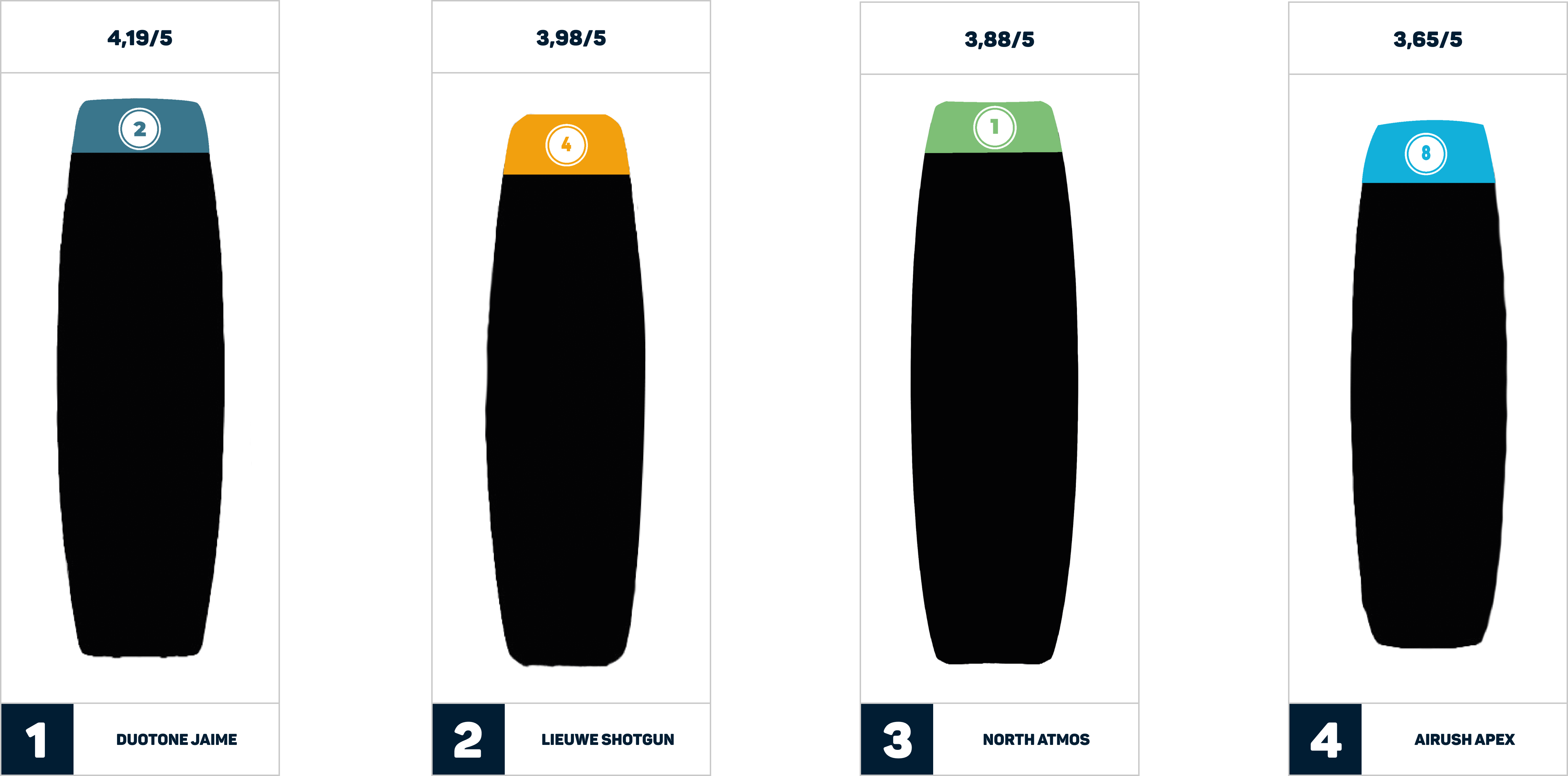
Personal favorites
At the end of the day, these are the 8 test riders from our very first Kitemana Blind Board Test and their final board choices! Because we chose testers from different levels and body types we see a lot of different personal favorites. Have a look at them all and you might identify yourself with one of our testers!
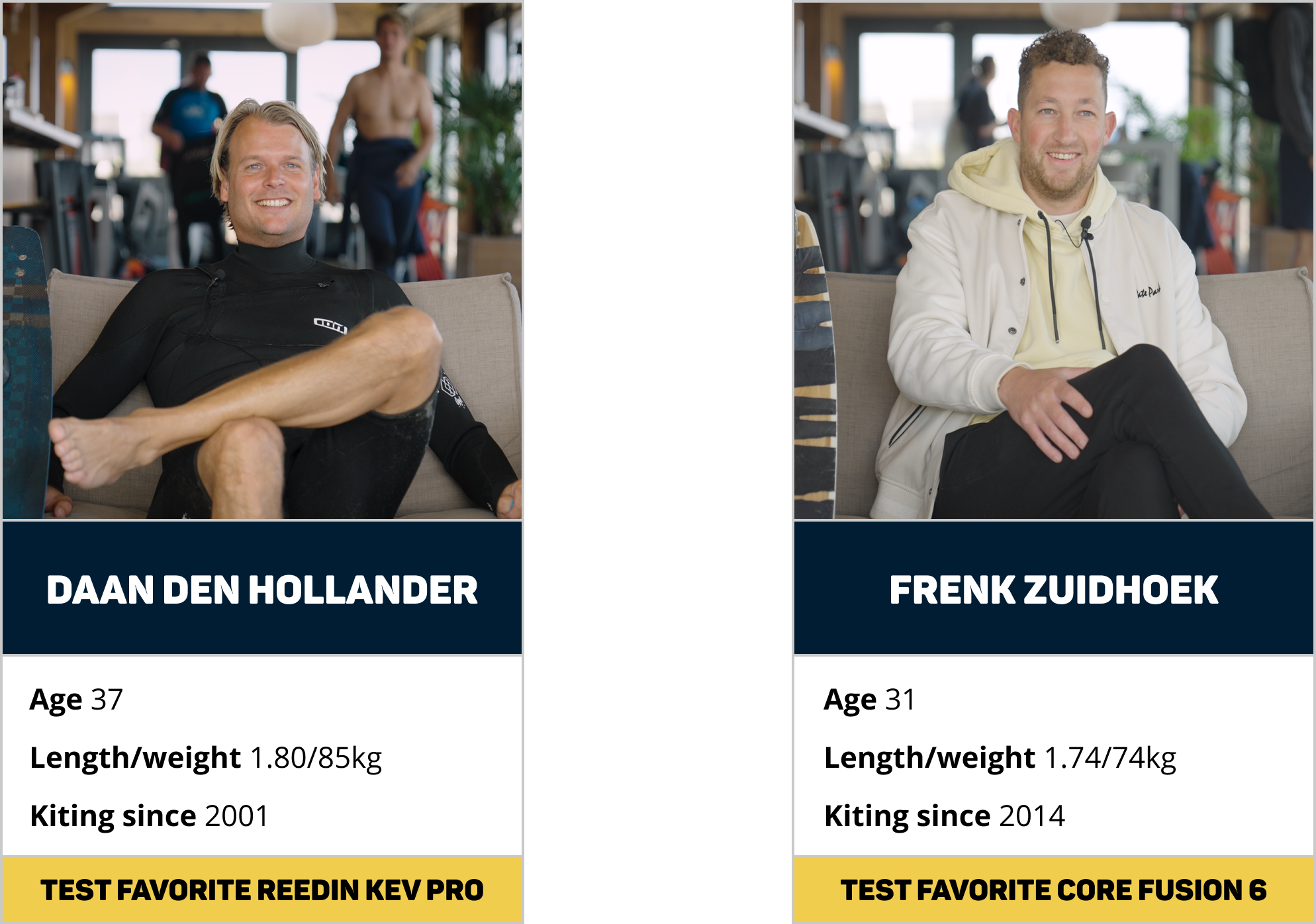
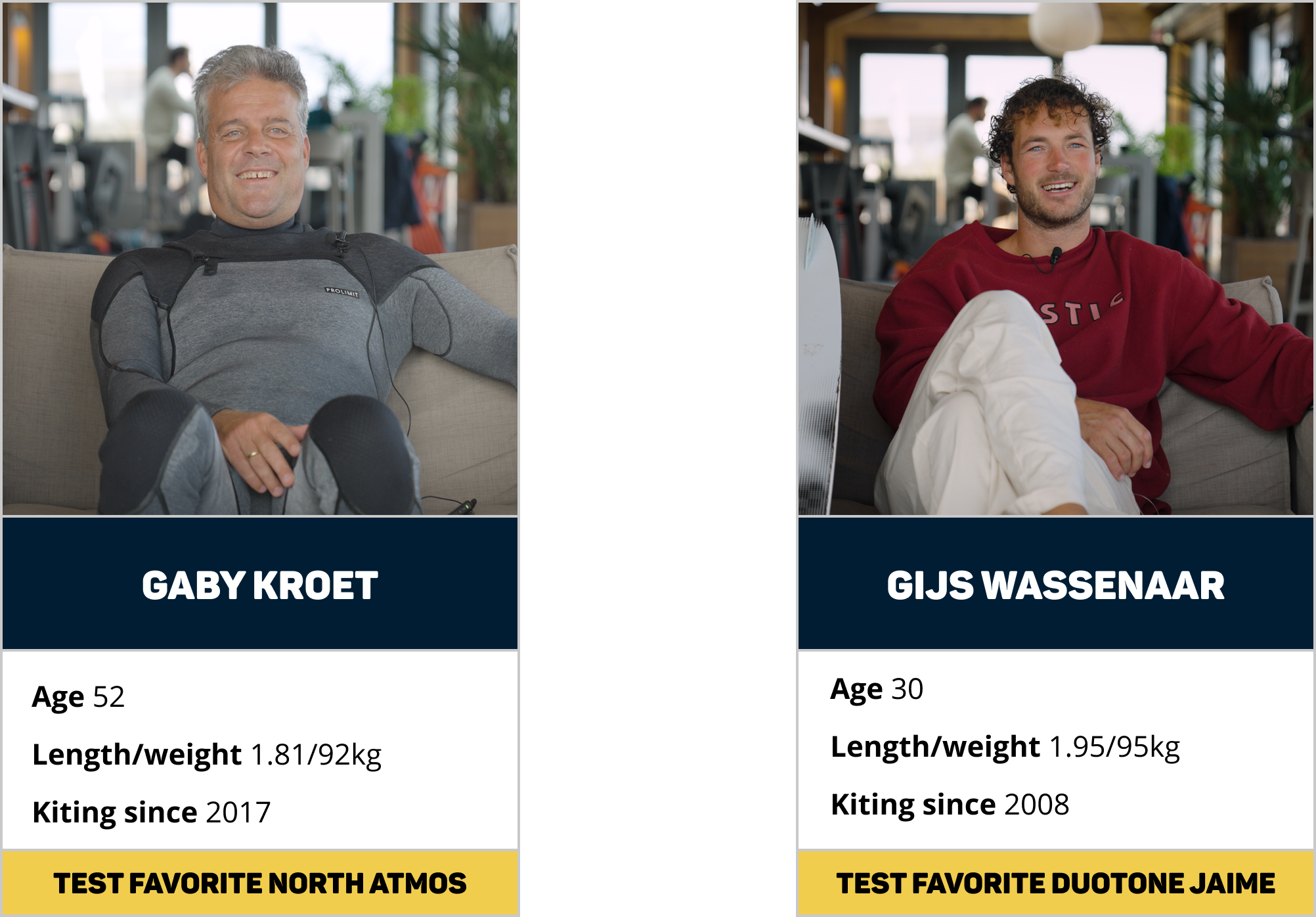
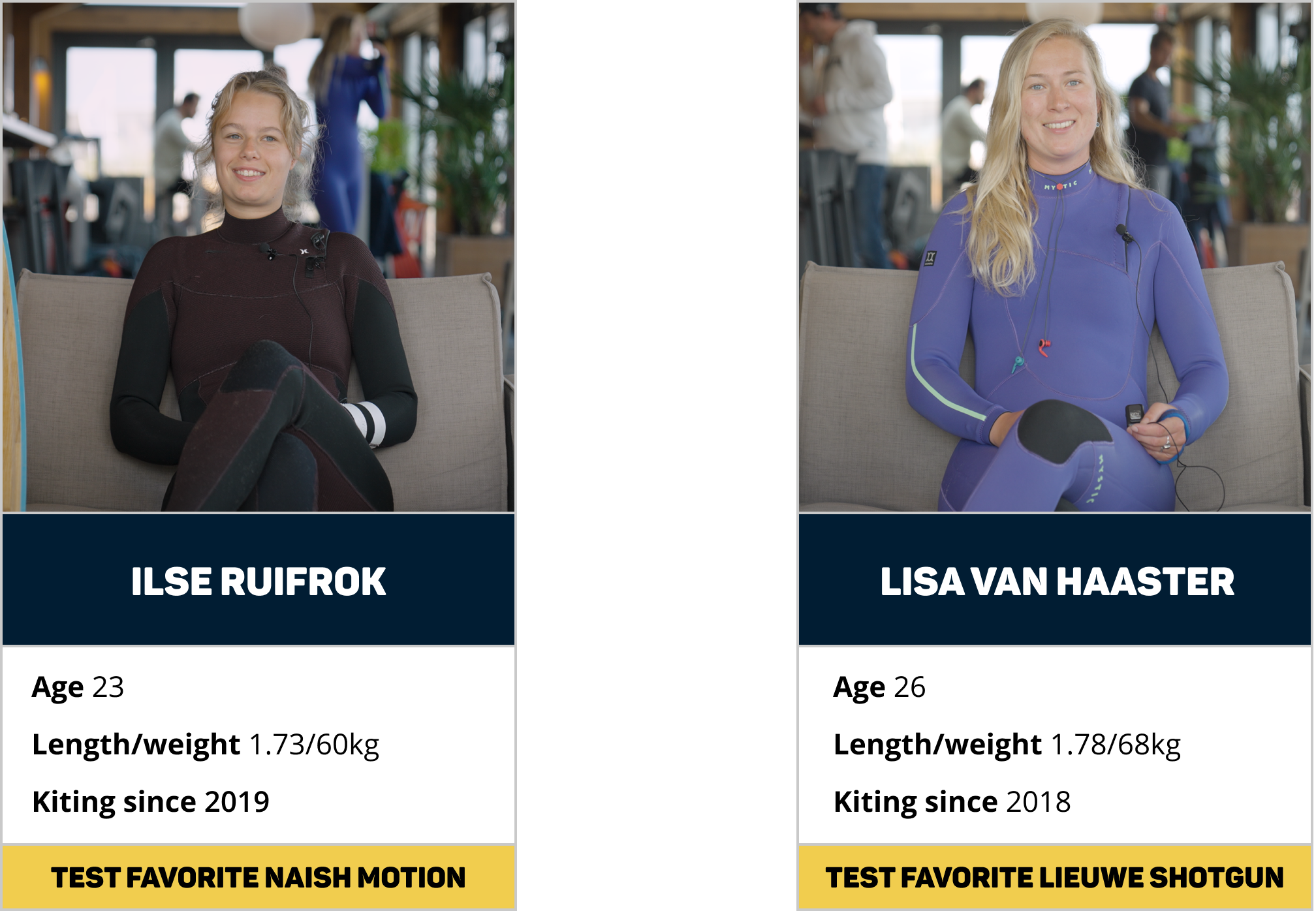
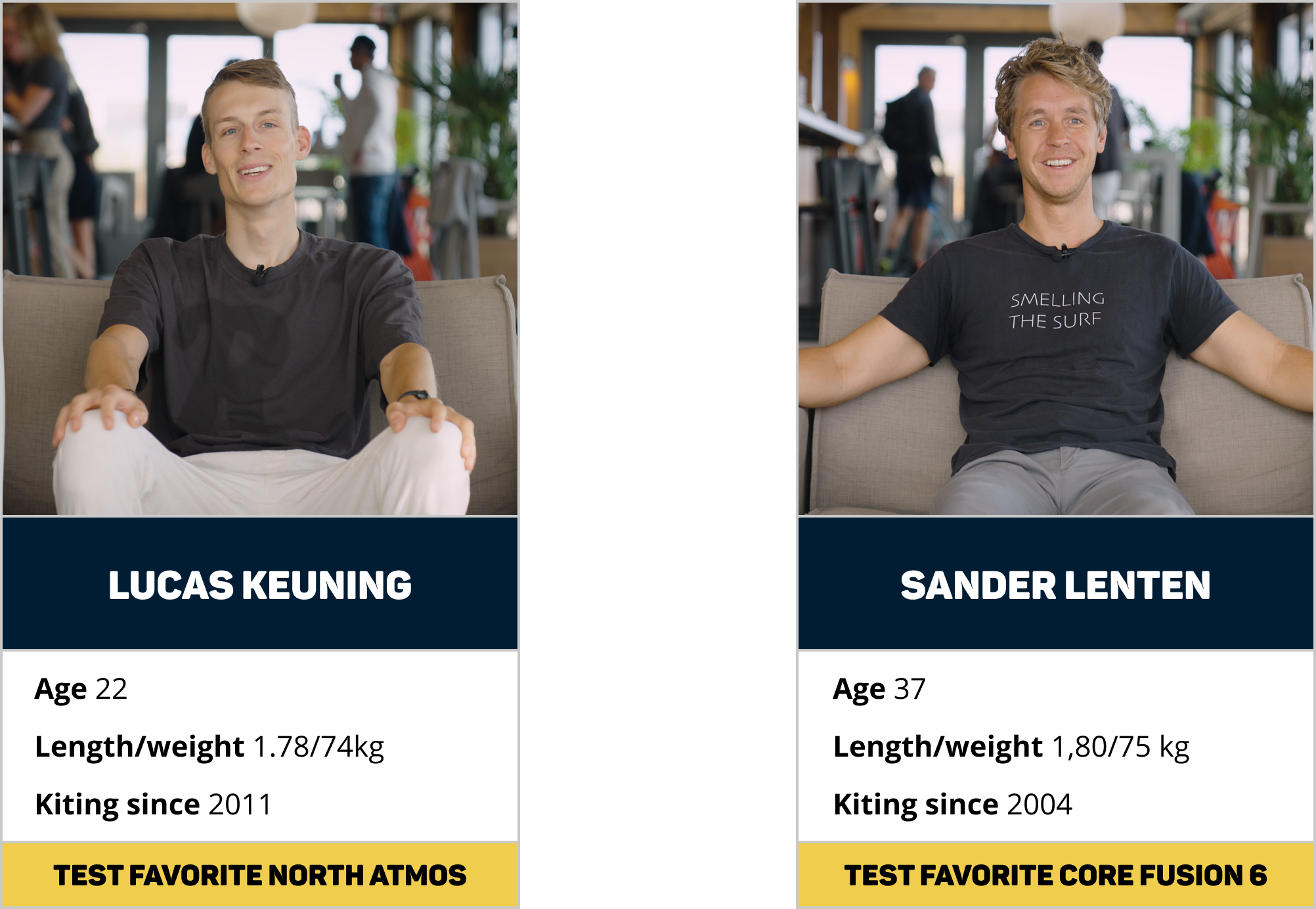
How to choose the right kiteboard? As you can see from our test results the perfect kiteboard is different for each rider. Luckily we have over 1000 different twintips on stock. And if you don’t know which one is the best for you, don’t hesitate to get in contact with us via e-mail, Whatsapp, phone or a nice visit to our mega store in Noordwijk. We hope that you liked our first edition of the Kitemana to Blind: twintip test!
Added to basket
| Subtotal | $ 0,00 |
| Shipping costs US | $ 69,95 |
| Total Total(excl VAT) | $ 69,95 |
You have no product(s) in you basket.
Weet je niet waar je moet beginner?
Contact our customer service for advice

